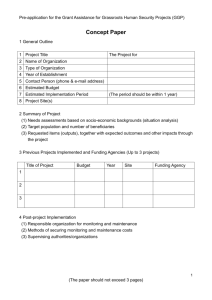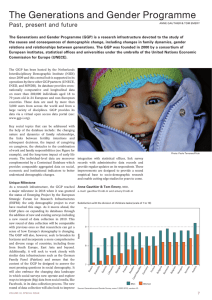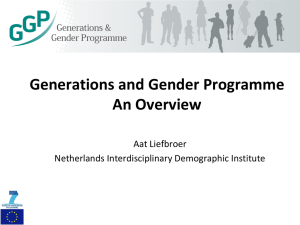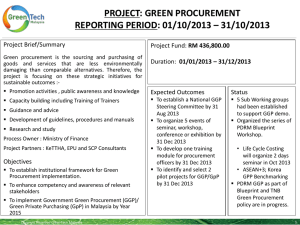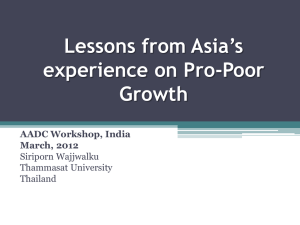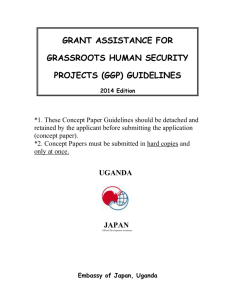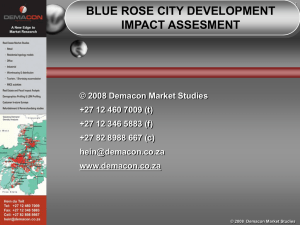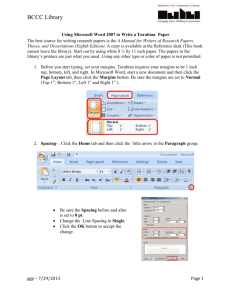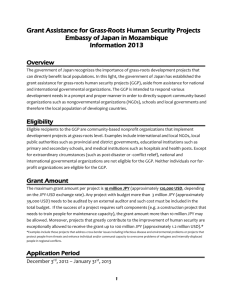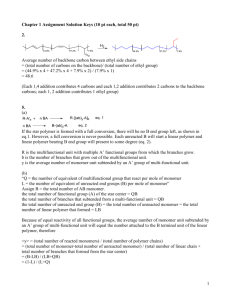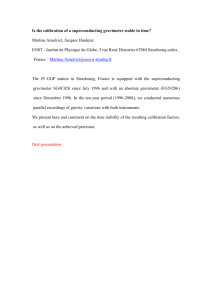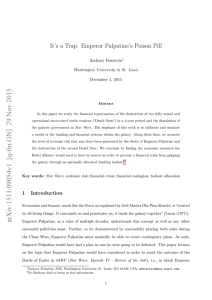Mrs Maria Jose Lemaitre
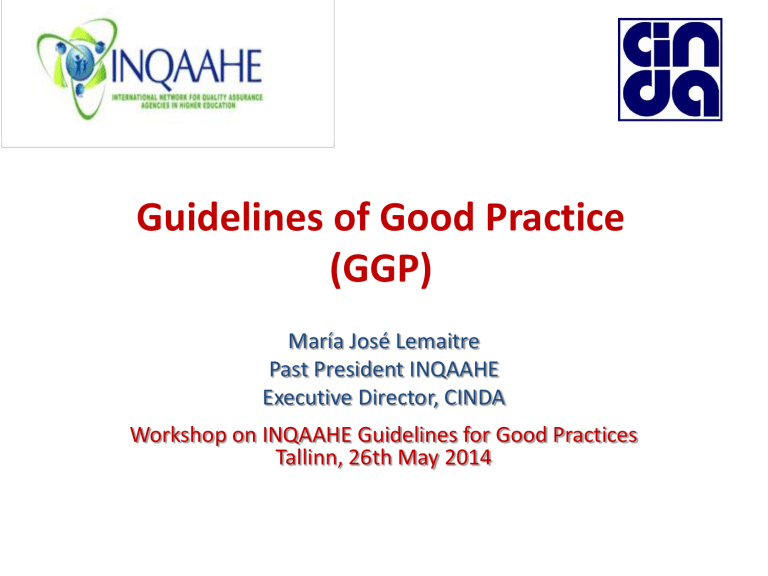
Guidelines of Good Practice
(GGP)
María José Lemaitre
Past President INQAAHE
Executive Director, CINDA
Workshop on INQAAHE Guidelines for Good Practices
Tallinn, 26th May 2014
Outline
• Rationale behind the definition of GGP
• Why are they called 'guidelines' rather than standards or principles
• What do they cover
• How can they be used
Rationale for the GGP
• Gathering of practices by QA agencies around the world
• Systematization of knowledge about QA
• A wide range of experiences in QA, in different national, sectoral, cultural contexts
Increasing professionalization of QA
Rationale for the GGP
Increasing professionalization of QA:
• a systematized body of knowledge,
• a common language,
• training programs and increasingly, people trained for work on QA
Need to systematize what constitutes reliable and recognized quality assurance procedures
Rationale for the GGP
• First version, 2003; revised 2006 based on the experience of agencies that had used them
• Compared with the ESG, developed in 2005
• They have been the basis for other similar exercises
(APQN, RIACES)
• Need to update them
Why are they called guidelines?
• Discussion about ‘guidelines’ vs standards, or principles
• Need to make clear that they must be adapted to different contexts
• Designed to be inclusive, and to be useful to agencies in different stages of development
• Designed to contribute to continuous improvement of QA agencies
Use of the GGP
First stage:
• Mostly developmental; no formal recognition of alignment.
• Some agencies used them for self assessment, with an external review organized by INQAAHE.
• Outcome: an audit report, highlighting strengths, areas for improvement, recommendations
• Suggestions for improvement of the GGP
Use of the GGP
Second stage:
• Revised version of the GGP
• Design of a process for recognition of alignment of agencies with the GGP
Validation of a review carried out by a reliable agency
Review process including self assessment and external review organized by INQAAHE
• Outcome: a report similar to the previous one, with a formal recognition of alignment
Contents of the GGP
SECTION I. The EQAA: accountability, transparency, and resources
Focus on the agency and its operation: mission, resources, internal QA, public information.
SECTION II. Institutions of higher education and the
EQAA: relationship, standards, and internal reviews
Links between the EQAA and HEI: respect for institutional autonomy, recognition of the role of HEI regarding quality improvement and QA, clear and public documentation, support and capacity building for self assessment
Contents of the GGP
SECTION III. EQAA review of institutions: evaluation, decision, and appeals
The organization of external reviews, including selection and training of external reviewers, independence and consistency of decision making, system for appeals
SECTION IV. External activities: collaboration with other agencies and transnational/cross-border education
Recognition that QA is not carried out in isolation, but builds on collaboration and networking. One significant area of collaboration is that of CBHE.
Criteria
Mission Statement
Resources
External review of the agency
Public information
Agency – Institution
Relationship
Documentation
Peer reviewers
Decision making
Systems for appeal
Inter-agency collaboration
Status and public recognition
Elements of external review
INQAAHE
1
2
3
4
5
6 - 7
8
9
10
11
8
ENQA ECA APQN RIACES
3.3; 3.5
1; 13 1.2
3.4
2.8; 3.8
3.7
2.2; 2.6
5
6; 7
8; 9
16
17
2.4; 3.6; 3.8
15
3.6; 3.7
3; 4
3.7
3; 2
10
11
2
6
8
7
1
6
4
7
1
1.2
1.3
3.2
3.1
2.1
23
2.2
2.3
2.4
2.3
3.3
1.1
Uses of the GGP
• Creating a framework to guide the creation of new EQAAs
• Providing criteria for use in the self and external evaluation of EQAAs
• Promoting professional development among
EQAAs and their staff
• Promoting public accountability of EQAAs
Uses of the GGP
• As a developmental tool: the GGP can provide useful guidance in establishing a QA agency, in developing internal quality assurance processes or in providing a framework for self assessment
• As an accountability tool: to provide public assurance that the agency operates in accordance to shared good practice in QA, through recognition of reliable external reviews or external reviews carried out by
INQAHE
